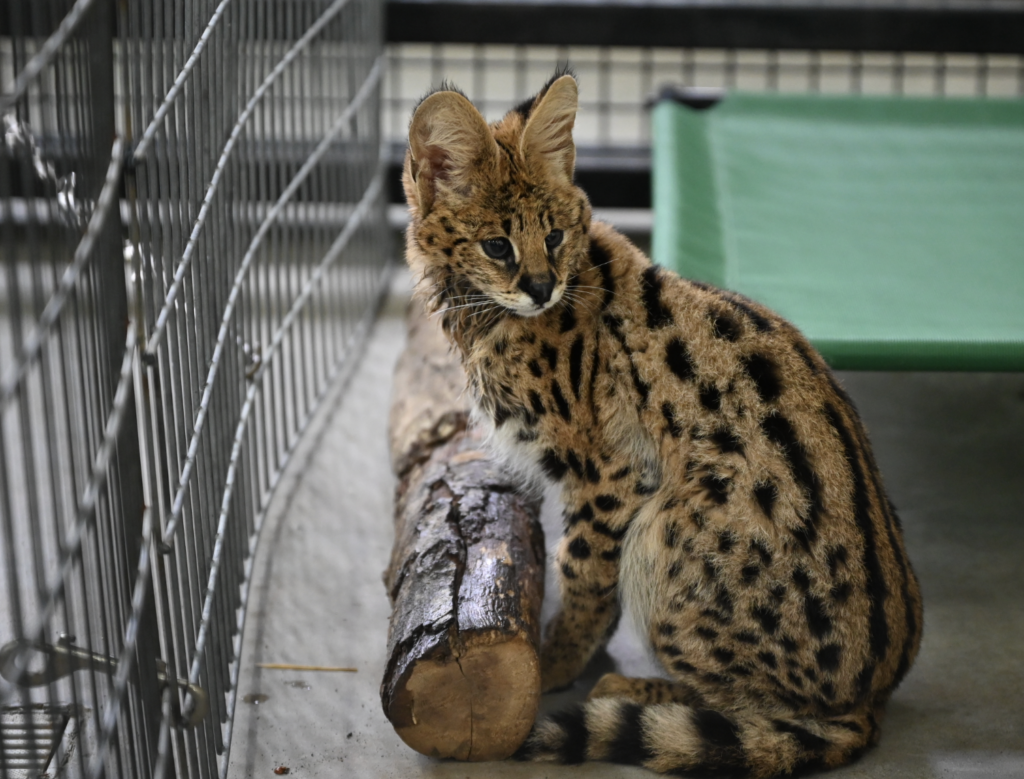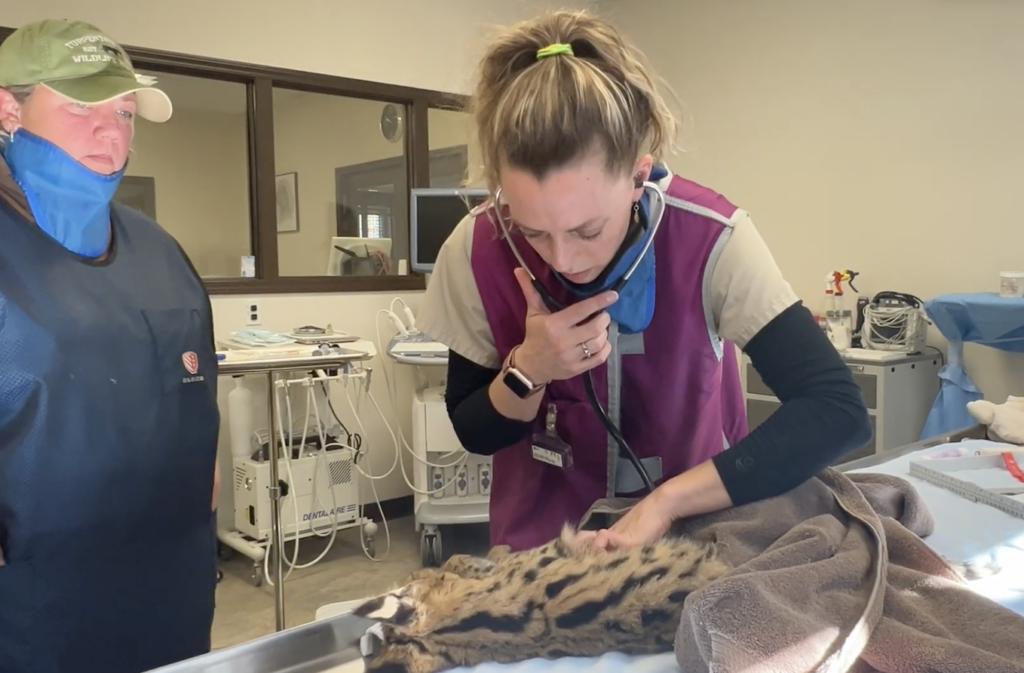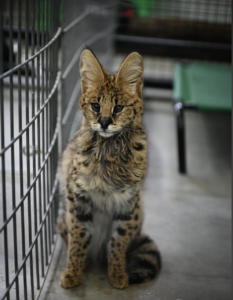 In early March, a USDA Inspector contacted TCWR to rescue a young serval named Tigger. The owner claimed she had obtained Tigger from a breeder to use as an educational outreach animal. The inspector told us the six-month-old serval had some severe health issues, including multiple fractures. The USDA had moved to confiscate Tigger because no veterinary care had been provided for this injured animal. The owner had claimed she lacked the funds for such care and that she and her daughter were too ill to drive the animal to a veterinarian, nor could they meet our team for transport.
In early March, a USDA Inspector contacted TCWR to rescue a young serval named Tigger. The owner claimed she had obtained Tigger from a breeder to use as an educational outreach animal. The inspector told us the six-month-old serval had some severe health issues, including multiple fractures. The USDA had moved to confiscate Tigger because no veterinary care had been provided for this injured animal. The owner had claimed she lacked the funds for such care and that she and her daughter were too ill to drive the animal to a veterinarian, nor could they meet our team for transport.
Ultimately, Tanya and Scott drove to West Memphis to meet a wildlife rehabber who had picked up Tigger from Mississippi State Small Mammal Vet School, where the USDA Official had left Tigger in safekeeping. The trip turned into an overnight rescue due to the time it took for the school to complete the necessary paperwork for Tigger’s transfer to our care.
 After giving Tigger a few days to acclimate to his new surroundings, TCWR Veterinarian Dr. Kellyn Sweeley anesthetized him to perform a Diagnostic exam. She found several issues, most of them not life-threatening, that we could address in the future. However, Tigger’s most critical issue that could prove life-threatening if not addressed soon was his diaphragmatic hernia. This urgency was due to the age and severity of this injury. Diaphragmatic hernias are most often caused by trauma. Tigger’s was located on the same side as six rib fractures. It might have been an easy fix if these injuries had just occurred. Since his injuries appeared to be at least six weeks old, the prolonged damage to his organs made his chances for survival less favorable. However, not fixing the hernia would surely lead to his future demise.
After giving Tigger a few days to acclimate to his new surroundings, TCWR Veterinarian Dr. Kellyn Sweeley anesthetized him to perform a Diagnostic exam. She found several issues, most of them not life-threatening, that we could address in the future. However, Tigger’s most critical issue that could prove life-threatening if not addressed soon was his diaphragmatic hernia. This urgency was due to the age and severity of this injury. Diaphragmatic hernias are most often caused by trauma. Tigger’s was located on the same side as six rib fractures. It might have been an easy fix if these injuries had just occurred. Since his injuries appeared to be at least six weeks old, the prolonged damage to his organs made his chances for survival less favorable. However, not fixing the hernia would surely lead to his future demise.
As soon as possible that week, Dr. Kellyn again anesthetized Tigger for surgery to repair his hernia. She’d brought in two other veterinary doctors, Dr. Ron Eby and Dr. Laura Hurst, to assist her and our experienced animal care staff in the complicated two-hour surgery. The surgical team found that Tigger’s entire small intestinal tract, half of his large intestinal tract, and pancreas had moved up into his chest. Because of this, his left lung and half of his right lung collapsed, restricting his heart from beating correctly. Despite their initial optimism, as organ damage appeared minimal, the team needed to stabilize him repeatedly from crashing by taking proper emergency measures.
 During the critical post-op period, Tigger breathed independently but could not maintain oxygen levels, so we continued to breathe for him periodically. Despite extremely close monitoring and treatment, Tigger eventually succumbed to these respiratory complications two hours after surgery. He passed away despite CPR efforts.
During the critical post-op period, Tigger breathed independently but could not maintain oxygen levels, so we continued to breathe for him periodically. Despite extremely close monitoring and treatment, Tigger eventually succumbed to these respiratory complications two hours after surgery. He passed away despite CPR efforts.
While we knew going into this that his chance for survival was not favorable due to the severity of his injuries, we very much wanted to save him. Tigger was a fighter to the last second. Sadly, Tigger had to endure needless suffering all due to human-inflicted conditions stemming from irresponsible breeding and a lack of proper nutrition. We want to thank our fantastic veterinarian, Dr. Kellyn Sweeley, along with Dr. Ron Eby and Dr. Laura Hurst, for their time and effort, and Animal Curator Emily McCormack, for keeping Tigger alive by breathing for him throughout the entire surgical period and into recovery.
We will be able to tell you all the details of Tigger’s brave journey with us and how we can prevent other wild cats from enduring similar suffering in the summer issue of our Big Cat Chronicles.
